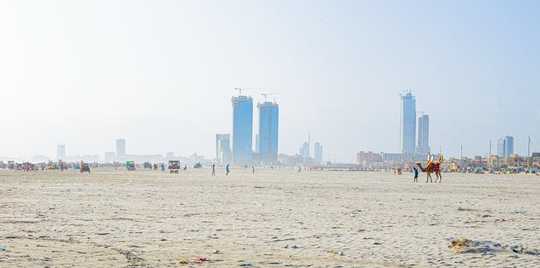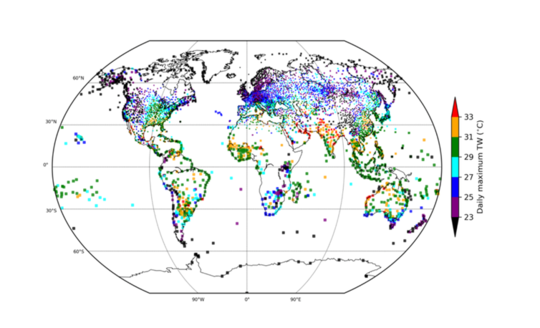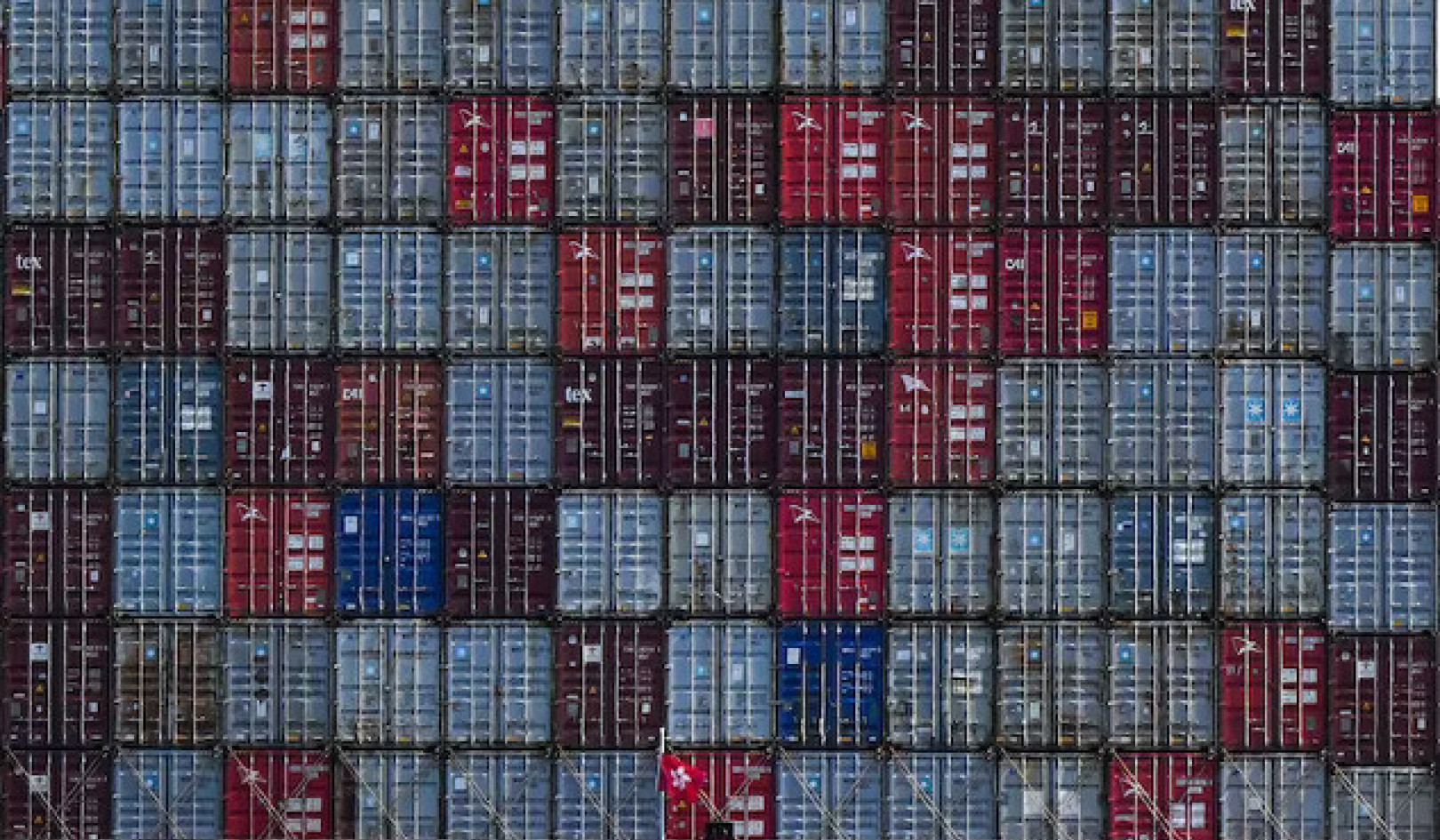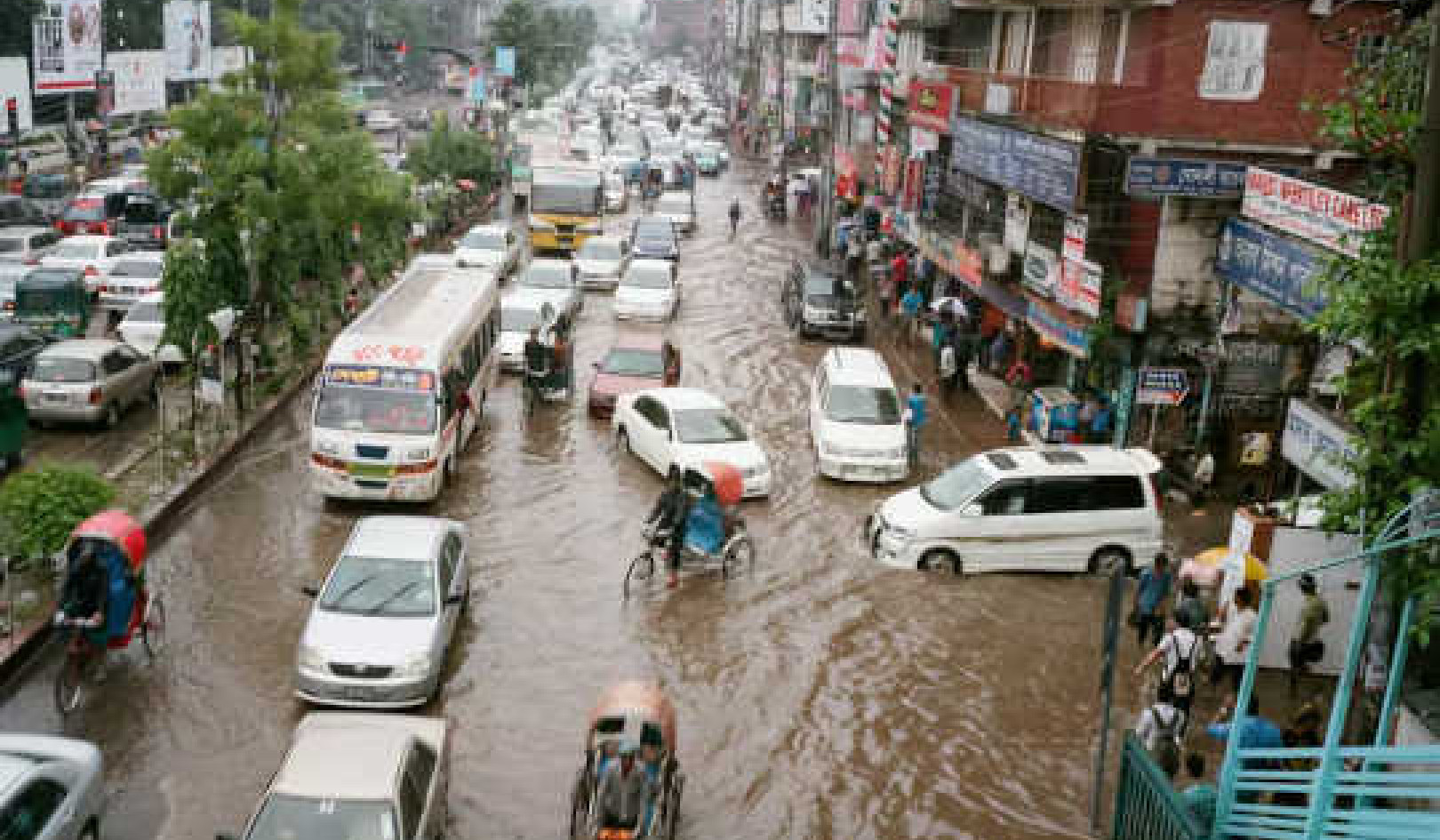 Samkhanproduction/Shutterstock
Samkhanproduction/Shutterstock
The explosive growth and success of human society over the past 10,000 years has been underpinned by a distinct range of climate conditions. But the range of weather humans can encounter on Earth – the “climate envelope” – is shifting as the planet warms, and conditions entirely new to civilisation could emerge in the coming decades. Even with modern technology, this should not be taken lightly.
Being able to regulate our temperature has played a key role in enabling humans to dominate the planet. Walking on two legs, without fur, and with a sweat-based cooling system, we’re well designed to beat the heat. But hot weather already limits our ability to work and stay healthy. In fact, our physiology places bounds on the level of heat and humidity we can cope with.
The normal temperature you see reported on weather forecasts is called the “drybulb” temperature. Once that rises above about 35°C, the body must rely on evaporating water (mainly through sweating) to dissipate heat. The “wetbulb” temperature is a measure that includes the chilling effect from evaporation on a thermometer, so it is normally much lower than the drybulb temperature. It indicates how efficiently our sweat-based cooling system can work.
Once the wetbulb temperature crosses about 35°C, the air is so hot and humid that not even sweating can lower your body temperature to a safe level. With continued exposure above this threshold, death by overheating can follow.
A 35°C limit may sound modest, but it isn’t. When the UK sweltered with a record drybulb temperature of 38.7°C in July 2019, the wetbulb temperature in Cambridge was no more than 24°C. Even in Karachi’s killer heatwave of 2015, the wetbulb temperature stayed below 30°C. In fact, outside a steam room, few people have encountered anything close to 35°C. It has mostly been beyond Earth’s climate envelope as human society has developed.
But our recent research shows that the 35°C limit is drawing closer, leaving an ever-shrinking safety margin for the hottest and most humid places on Earth.
Heat beyond human tolerance
Modelling studies had already indicated that wetbulb temperatures could regularly cross 35°C if the world sails past the 2°C warming limit set out in the Paris climate agreement in 2015, with The Persian Gulf, South Asia and North China Plain on the frontline of deadly humid heat.
Our analysis of wetbulb temperatures from 1979-2017 did not disagree with these warnings about what may be to come. But whereas past studies had looked at relatively large regions (on the scale of major metropolitan areas), we also examined thousands of weather station records worldwide and saw that, at this more local scale, many sites were closing in much more rapidly on the 35°C limit. The frequency of punishing wetbulb temperatures (above 31°C, for example) has more than doubled worldwide since 1979, and in some of the hottest and most humid places on Earth, like the coastal United Arab Emirates, wetbulb temperatures have already flickered past 35°C. The climate envelope is pushing into territory where our physiology cannot follow.
The consequences of crossing 35°C, however brief, have perhaps been mainly symbolic so far, as residents of the hottest places are used to riding out extreme heat by sheltering in air-conditioned spaces. But relying on artificial cooling to cope with the growing heat would supercharge energy demand and leave many people dangerously exposed to power failures. It would also abandon the most vulnerable members of society and doesn’t help those who have to venture outside.
 All-time maximum humid heat records at weather stations around the world, 1979-2017. Colin Raymond, Author provided
All-time maximum humid heat records at weather stations around the world, 1979-2017. Colin Raymond, Author provided
The only way to avoid being carried further and more frequently into uncharted heat territory is to reduce greenhouse gas emissions to net zero. The economic slowdown during the coronavirus pandemic is expected to slash emissions by 4-7% in 2020, bringing them close to where global emissions were in 2010. But concentrations of greenhouse gases are still rising rapidly in the atmosphere. We must also adapt where possible, by encouraging simple behavioural changes (like avoiding outdoor daytime activity) and by ramping up emergency response plans when heat extremes are imminent. Such steps will help to buy time against the inexorable forward march of the Earth’s climate envelope.
We hope that our research illuminates some of the challenges that may await us as global temperatures rise. The emergence of unprecedented heat and humidity – beyond what our physiology can tolerate – is just a portion of what could be in store. An even warmer and wetter world risks generating climate extremes beyond any human experience, including the potential for a whole host of “unknown unknowns”.
We hope that the sense of vulnerability to surprises left by COVID-19 invigorates global commitments to reaching carbon neutrality – recognising the value in preserving conditions that are somewhat familiar, rather than risking what may be waiting in a very novel climate ahead.
About The Author
Tom Matthews, Lecturer in Climate Science, Loughborough University and Colin Raymond, Postdoctoral Researcher, California Institute of Technology
This article is republished from The Conversation under a Creative Commons license. Read the original article.
Related Books
Life After Carbon: The Next Global Transformation of Cities
by Peter Plastrik , John Cleveland The future of our cities is not what it used to be. The modern-city model that took hold globally in the twentieth century has outlived its usefulness. It cannot solve the problems it helped to create—especially global warming. Fortunately, a new model for urban development is emerging in cities to aggressively tackle the realities of climate change. It transforms the way cities design and use physical space, generate economic wealth, consume and dispose of resources, exploit and sustain the natural ecosystems, and prepare for the future. Available On Amazon
The future of our cities is not what it used to be. The modern-city model that took hold globally in the twentieth century has outlived its usefulness. It cannot solve the problems it helped to create—especially global warming. Fortunately, a new model for urban development is emerging in cities to aggressively tackle the realities of climate change. It transforms the way cities design and use physical space, generate economic wealth, consume and dispose of resources, exploit and sustain the natural ecosystems, and prepare for the future. Available On Amazon
The Sixth Extinction: An Unnatural History
by Elizabeth Kolbert Over the last half-billion years, there have been Five mass extinctions, when the diversity of life on earth suddenly and dramatically contracted. Scientists around the world are currently monitoring the sixth extinction, predicted to be the most devastating extinction event since the asteroid impact that wiped out the dinosaurs. This time around, the cataclysm is us. In prose that is at once frank, entertaining, and deeply informed, New Yorker writer Elizabeth Kolbert tells us why and how human beings have altered life on the planet in a way no species has before. Interweaving research in half a dozen disciplines, descriptions of the fascinating species that have already been lost, and the history of extinction as a concept, Kolbert provides a moving and comprehensive account of the disappearances occurring before our very eyes. She shows that the sixth extinction is likely to be mankind's most lasting legacy, compelling us to rethink the fundamental question of what it means to be human. Available On Amazon
Over the last half-billion years, there have been Five mass extinctions, when the diversity of life on earth suddenly and dramatically contracted. Scientists around the world are currently monitoring the sixth extinction, predicted to be the most devastating extinction event since the asteroid impact that wiped out the dinosaurs. This time around, the cataclysm is us. In prose that is at once frank, entertaining, and deeply informed, New Yorker writer Elizabeth Kolbert tells us why and how human beings have altered life on the planet in a way no species has before. Interweaving research in half a dozen disciplines, descriptions of the fascinating species that have already been lost, and the history of extinction as a concept, Kolbert provides a moving and comprehensive account of the disappearances occurring before our very eyes. She shows that the sixth extinction is likely to be mankind's most lasting legacy, compelling us to rethink the fundamental question of what it means to be human. Available On Amazon
Climate Wars: The Fight for Survival as the World Overheats
by Gwynne Dyer Waves of climate refugees. Dozens of failed states. All-out war. From one of the world’s great geopolitical analysts comes a terrifying glimpse of the strategic realities of the near future, when climate change drives the world’s powers towards the cut-throat politics of survival. Prescient and unflinching, Climate Wars will be one of the most important books of the coming years. Read it and find out what we’re heading for. Available On Amazon
Waves of climate refugees. Dozens of failed states. All-out war. From one of the world’s great geopolitical analysts comes a terrifying glimpse of the strategic realities of the near future, when climate change drives the world’s powers towards the cut-throat politics of survival. Prescient and unflinching, Climate Wars will be one of the most important books of the coming years. Read it and find out what we’re heading for. Available On Amazon
From The Publisher:
Purchases on Amazon go to defray the cost of bringing you InnerSelf.comelf.com, MightyNatural.com, and ClimateImpactNews.com at no cost and without advertisers that track your browsing habits. Even if you click on a link but don't buy these selected products, anything else you buy in that same visit on Amazon pays us a small commission. There is no additional cost to you, so please contribute to the effort. You can also use this link to use to Amazon at any time so you can help support our efforts.























